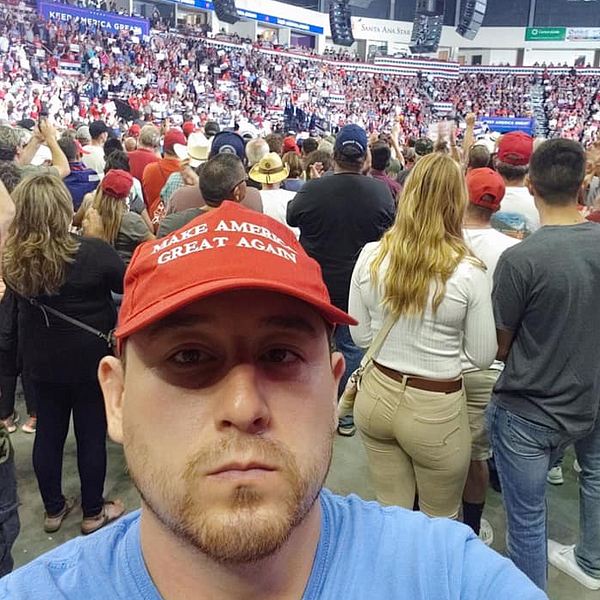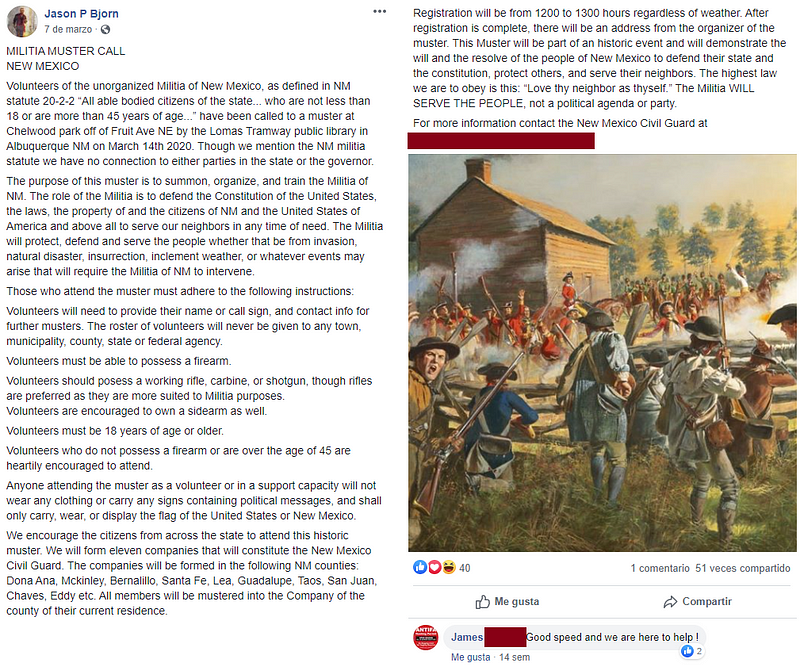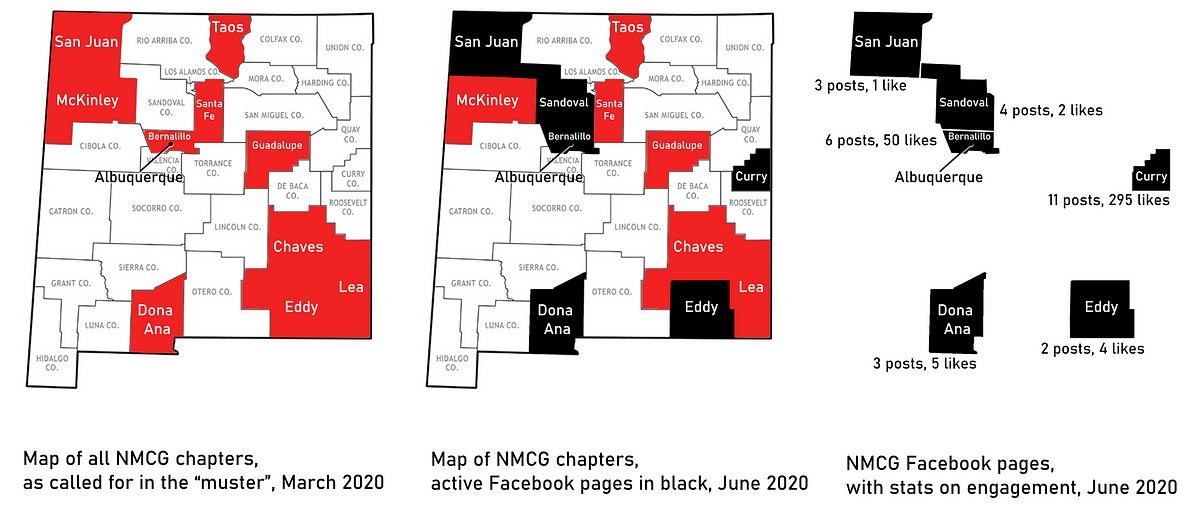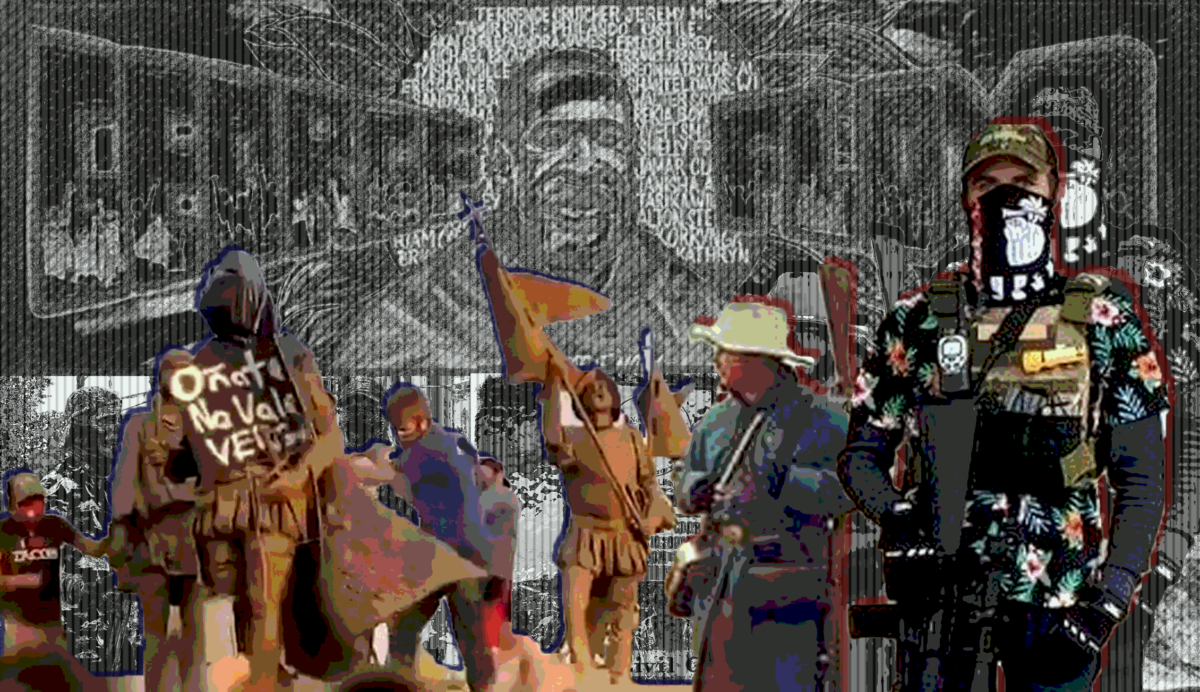Since the murder of George Floyd by the Minneapolis Police Department, every single state in the US has had a major protest in response. In some of these states, certain towns, cities, and capitals saw an escalation in tactics against the status quo.
With this action, of course, came several waves of reaction. These have included conservative and liberal media alike’s “antifa provocateur” or “outside agitator” claims, despite little evidence beyond vague gesturing from police departments and mayors that have been proven wrong time and time again. Other reactions have included those from GOP lawmakers calling for military force to be used against protesters, even earning some a platform in the Paper of Record. Yet other reactions from ostensibly the right have been those militia or militia-like groups involving themselves in or around these political happenings.
It’s been about 18 months since I first came across the ‘boogaloo’ subculture online. This piece you are currently reading is not going to be the boogaloo piece I’ve been working on for a while, but I will be discussing some of the involvement of “Boogaloo Bois” within this political moment. There has been a lot of different writing of different levels of rigor or accuracy, and there are only a few authors at this moment that I can honestly recommend. For now, I encourage reading the following article by Cassie Miller of the Southern Poverty Law Center:
The ‘Boogaloo’ Started as a Racist Meme
The Boogaloo in Militia Interactions with Protests?
There are a lot of misconceptions about the Boogaloo “movement”, but here are some specifics about how this mostly aesthetics-based or methodologically-focused segment of armed activism has overlapped with militia activism in the last few months.
There are some influential figures within the American right-wing militia movement who have expressed their interest in kicking off “the Boogaloo”. Most have expressed their support through memes or deployment of particular meme aesthetics. There are also several people who claim to be “Boogaloo Bois” who have been posting in support of protests, seeking to protect protesters, or actively antagonizing protesters at this moment.
It’s important to note that this is not so much a group or even a movement, but a set of directives and methodological outlook. Not every person wearing a Hawaiian shirt is a Boogaloo person, nor every armed White dude standing near or participating in protests. Not all ‘Boogaloo’ people are necessarily racists, but not all ‘Boogaloo’ people want to fight cops, either. There’s a lot of weird fluidity among people who identify with ‘Boogaloo’ and generalizations remain quite hard.
Unsurprisingly, as well, there are figures in the nationalist and fascist right that are also seeking to steer Boogaloo energy into their own ideological cul de sac, pushing a disorganized and disintegrated cohort of armed online mostly-young individuals towards taking a more ideological and explicitly right-wing position. All of these things I will be covering in a later piece, I promise, but this subset of the armed online milieu is one getting a special and (unsurprisingly) overexposed level of coverage in the media right now.
The Role of the Militia: Divided, Disagreeing, and Disempowered?
The most vocal elements of the American militia movement are against the current uprising in the States. This is unsurprising. There are, however, some who were previously involved in anti-quarantine politics and protests that have come out in temporary ginger support of anti-police action. Many of these folks, however, have since swung back against the protests once statues to Confederates, conquerors, and colonists became targets of local protest movements across the country and parts of the world.
It is fascinating to see many individuals spend a bit of time struggling with redefining what “government tyranny” means, and whose Constitutional rights are ones worth defending in the street against the government. This recent uprising has provided even greater insight into how referring to all of the American militia movement as explicitly “anti-government” is not an accurate moniker in the least. It’s also yet apparent what “Patriotism” has come to mean for many of these folks, too. Whether this is the III%SF creating a renewed initiative to “Defend Confederate Monuments”, Oath Keepers planning to “retake” the Capital Hill Autonomous Zone, or members of the Bundy Ranch seeking to find some third way that doesn’t involve “government criminals” or “street criminals” (while asserting that the two, like some sort of conspiratorial Batman and Joker, recognize that they need one another in order to exist). There are many other efforts to defend the state or the state narrative that come in all shades of ‘Patriot’, but the movements have almost assuredly reiterated to the public that despite their esoteric disagreements or indeed often outright disdain for one another, they are a conservative movement through and through.
However, even now these remain generalizations about a field of US right-wing activism that holds many different specific ideologies, key figures, and approved methodologies. It’s maybe best to look at individual groups in this time of dynamic conditions, which brings us to protests in Albuquerque, New Mexico.
Heating Up in Albuquerque: A Protester is Shot
On June 15th, protesters in Albuquerque gathered at the bronze statue of Spanish Conquistador Don Juan de Oñate outside of the Albuquerque Museum of Art. A state militia, the New Mexico Civil Guard (NMCG), was at the site monitoring the situation. However, after protesters secured a chain around the neck of the Oñate statue, the Civil Guard backed off.
A man in a blue shirt, an ardent defender of the conquistador statue against a crowd that outnumbered him greatly, began throwing protesters to the ground when they blocked his access to the statue. Prior to this clear physical assault on video, this blue-shirted man had been macing members of the crowd and shoving people. After he swung a protester to the ground, activists ran him out of the crowd, yelling for him to go home. The man was then haphazardly tackled by two protesters. Onlookers, realizing the man in the blue shirt had a gun, began shouting “he’s going to kill you!” before the man fired four shots with a handgun, wounding a skateboarder in the torso.

Blue-shirted Steven Ray Baca then cleared his chamber, set the weapon on the ground, and sat on the road while first aid was applied to the protester. The New Mexico Civil Guard claims to have then held Baca at gunpoint while waiting for the police to show up. Baca was charged within hours with aggravated battery with a deadly weapon and firearm enhancement.
Baca is a Trump supporter, and previously attended one of his rallies in a Make America Great Again hat. He is the son of a former Bernalillo County sheriff and ran for city council in Albuquerque previously. When on the ground being arrested, Baca was sure to announce his lineage out loud, too.
In the hours following the event, NMCG has distanced themselves from Baca, claiming against the media that he was not part of their group. While a number of folks with surname “Baca” are often interacting with the NMCG Facebook Page for the division Baca calls home, this is a common last name for New Mexico, originating from the Spanish colonial military structure holding modern-day New Mexico. It does not appear that these are close family members of Steven Ray and it seems he may have just been an armed vigilante concerned about the fate of a bronze statue in Albuquerque.
But who are the NMCG?
The New Mexico Civil Guard is a relatively new militia movement created in March 2020 by a Civil War reenactor in the state of its name. The “muster call” for this militia is detailed in the screenshot below:

As indicated in this post, the NMCG started with a call for the creation of militia chapters in 10 counties of New Mexico, marked in red in the below graphic. In the evolution from “muster” to the creation of Facebook pages, the counties represented changed, marked in black in the below graphic. These chapters have varying levels of engagement, as indicated below:

Albuquerque is in Bernalillo County, where this incident took place and minimal posting/interaction for the NMCG has occurred. The main Facebook page, and coincidentally where most of the engagement with the folks of New Mexico and the national media is happening, is the Curry County page. Curry County is over 200 miles away from Albuquerque, about a 3.5-hour drive from the capital. The Facebook page of the Curry County NMCG does seem to indicate that they were on-site, potentially indicating that the ‘outsiders’ at this protest were, in fact, the militia members there to “protect the community”. That Baca saw other armed men conceivably on his side at this event is likely not insignificant, regardless of the NMCG backing off of the protest and claiming to have detained Baca at gunpoint following him discharging his gun.

NMCG, in the minimal postings of its official pages and likely members, is a real hodgepodge of online armed right aesthetics and inclinations (see above). It simultaneously features aesthetics relating the group to the Founding Fathers and Constitutionalism alongside indications that the group was previously a III% splinter. At the same time, though, they have also shared Boogaloo-style edits on some of their photos and even a strange alignment with a church in Socorro, New Mexico.
Their recent tango with Boogaloo aesthetics seems more related to one of their members, an O’Rion Petty. He is a painter and currently identifies himself as a captain in the New Mexico Civil Guard Curry County chapter. He’s been interviewed in the media about his commitment to the Boogaloo and explained that it’s only a personal commitment and not representative of the militia overall.
After some digging and comparing details, I’m also fairly certain Petty is the one on the left in the NMCG church photo. My apologies for the weird removed areas of the three photos — some have been edited for privacy, others for clarity of comparison. Note the same plate carrier and hat in both photos (far right photo is heavily filtered but the image is still legible to that end.

Petty, like other members of NMCG interviewed in the media, has indicated that the purpose of the militia in the uprisings in their state is to protect people and their property. They have seen themselves, therefore, as a bulwark against rioting and looting in their communities. It will be interesting to see how they handle the coming week of news after Baca’s attack on protesters this week. For now, though, they are oscillating between distancing themselves from the attacker, claiming that they detained him until police showed (though video looks as if they are protecting him from reprisal), and pointing out that the shooter was chased by protesters.
There’s a lot to consider regarding how these types of groups are interacting with the current time. As we find ourselves in a politically-excited moment that likely won’t let up for a while — either after major social transformation or overwhelming fatigue — MilitiaWatch is remaining tuned in to what and how the militias are responding to this situation. The NMCG response to current politics seems fairly in line with many other similar movements, regardless of ideological specificity. Armed violence against protesters by vigilantes, business owners, police, or other extremists are not unique to this situation, yet it is worrying to see it happen wherever it does.
It is yet unknown how much coordination the Albuquerque police have with armed militias like the NMCG, but there are signs that it isn’t none. One of the things about Baca shooting a protester and the NMCG’s presence at the scene that has been itching at me during this research, though, is how the police referred to the militia when en route to the scene: “armed friendlies”.
Originally posted on Medium by Hampton Stall on .
Exported and reposted on July 28, 2020.

